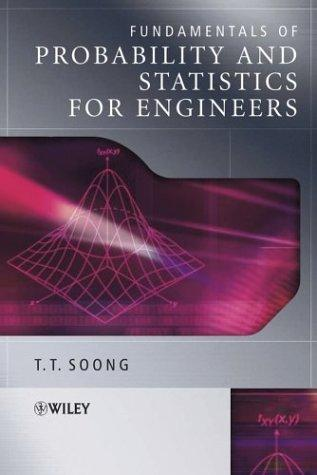

Most ebook files are in PDF format, so you can easily read them using various software such as Foxit Reader or directly on the Google Chrome browser.
Some ebook files are released by publishers in other formats such as .awz, .mobi, .epub, .fb2, etc. You may need to install specific software to read these formats on mobile/PC, such as Calibre.
Please read the tutorial at this link: https://ebookbell.com/faq
We offer FREE conversion to the popular formats you request; however, this may take some time. Therefore, right after payment, please email us, and we will try to provide the service as quickly as possible.
For some exceptional file formats or broken links (if any), please refrain from opening any disputes. Instead, email us first, and we will try to assist within a maximum of 6 hours.
EbookBell Team

0.0
0 reviewsPreface
This book was written for an introductory one-semester or two-quarter course
in probability and statistics for students in engineering and applied sciences. No
previous knowledge of probability or statistics is presumed but a good understanding
of calculus is a prerequisite for the material.
The development of this book was guided by a number of considerations
observed over many years of teaching courses in this subject area, including the
following: .As an introductory course, a sound and rigorous treatment of the basic
principles is imperative for a proper understanding of the subject matter
and for confidence in applying these principles to practical problem solving.
A student, depending upon his or her major field of study, will no doubt
pursue advanced work in this area in one or more of the many possible
directions. How well is he or she prepared to do this strongly depends on
his or . her mastery of the fundamentals. It is important that the student develop an early appreciation for applications.
Demonstrations of the utility of this material in nonsuperficial applications
not only sustain student interest but also provide the student with
.stimulation to delve more deeply into the fundamentals. Most of the students in engineering and applied sciences can only devote one
semester or two quarters to a course of this nature in their programs.
Recognizing that the coverage is time limited, it is important that the material
be self-contained, representing a reasonably complete and applicable body of
knowledge.
The choice of the contents for this book is in line with the foregoing
observations. The major objective is to give a careful presentation of the
fundamentals in probability and statistics, the concept of probabilistic modeling,
and the process of model selection, verification, and analysis. In this text,
definitions and theorems are carefully stated and topics rigorously treated
but care is taken not to become entangled in excessive mathematical details.
Practical examples are emphasized; they are purposely selected from many
different fields and not slanted toward any particular applied area. The same
objective is observed in making up the exercises at the back of each chapter.
Because of the self-imposed criterion of writing a comprehensive text and
presenting it within a limited time frame, there is a tight continuity from one
topic to the next. Some flexibility exists in Chapters 6 and 7 that include
discussions on more specialized distributions used in practice. For example,
extreme-value distributions may be bypassed, if it is deemed necessary, without
serious loss of continuity. Also, Chapter 11 on linear models may be deferred to
a follow-up course if time does not allow its full coverage.